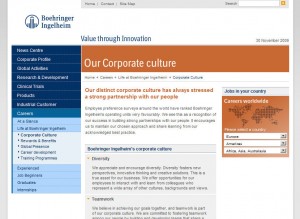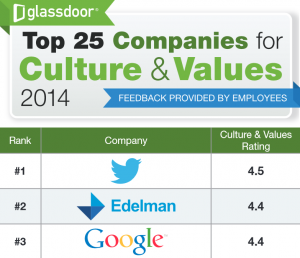Here’s a smart, useful summary of the components that make up what we call “corporate culture”:
Culture includes a wide range of social qualities such as beliefs, sense of mission, values, norms, traditions, how victories are celebrated, physical layout (e.g., open plan vs. closed offices), how conflicts get resolved (e.g., consensus vs. command-and-control), leadership style (e.g., team-based vs. “Lone Ranger”), communication style (e.g., candor vs. diplomacy; speed vs. deliberation), and interpersonal practices (e.g., formality/informality).
The description is from a blog post by Robert Bruner, Dean of the University of Virginia’s Darden School of Business, and the rest of his commentary is well worth reading. The main theme is how transactional and relational business cultures differ—and why understanding the difference is important. “A failure to read correctly a firm’s culture,” Darden asserts, “can have catastrophic consequences for one’s career.”
The reverse is also true. Failure to present a firm’s culture correctly can have catastrophic consequences when it comes to attracting the best potential employees.
Since the corporate Careers site is a key tool in communicating the company culture, it’s worth a careful review to determine whether the site is doing a good job. Now here’s the tricky bit: In order to measure the website’s success on this point, it will be necessary to have a solid definition of what the message actually ought to be.
Looking back at Bruner’s list of factors, it won’t take long to notice that few of them are actually addressed or even implied on most sites. There may be a statement of corporate philosophy that hints at “beliefs, sense of mission, values, norms”; there may be something about rewards/recognition that suggests “how victories are celebrated.” There might be some facility photos or even a video tour that depicts “physical layout.” But I’ve seldom seen anything about “traditions.”
And it’s extremely rare to find any of Darden’s other factors (conflict resolution, leadership style, communication style, and interpersonal practices) explicitly described on a corporate site. At best, there are implications embedded in the design and conveyed in the tone of the content.
That implicit messaging might or might not accurately reflect the corporate culture. Does a bright-and-breezy site promise an open, informal atmosphere? Does a button-down pinstripe site forebode a restrictive environment? It would be an interesting project to determine whether there really are any correlations in most cases.
As to overt statements—a quick check of five major company sites produced even less than I expected. Most delivered the culture message via employee testimonials, ranging from anonymous text snippets (“my co-workers are fun and friendly”) to fully produced videos that include scenic footage and background music. One site had twenty videos, adding up to an hour of people talking directly into the camera about all the jobs they have had and how much they like Company X.
I’ll end by just wondering what it would be like if every company site had to provide a short, clear statement about each category in Dean Bruner’s post. Or if they had to define their culture in terms of the Denison Model.
That would be . . . cool.
Cynthia Giles has followed a serpentine career path from academia to publishing to marketing and design to information technology and corporate communications. There’s plenty of detail about this journey at www.cynthiagiles.com, but briefly--the common theme has been ideas, and how to present them effectively. Along the way, she became an accidental expert on data warehousing and business intelligence, and for the past ten years she has combined corporate contracting with an independent consulting practice that focuses on marketing strategy for smaller businesses and non-profits.
Having spent quite a bit of time looking for work, and anywhere from two weeks to two years inside a wide variety of American companies—she has given much thought to what works (and what doesn’t) when it comes to creating a great employment fit.




Many companies show their corporate culture accurately without meaning to. They give little clues through their choice of design and the organization of their information. The information structures of a company mirrors their organizational structure.
Many companies would benefit from taking a close look at their own corporate culture through their public image. It’s often more accurate then they intended.
Absolutely right, Zack–and thanks for the observation. I come across so many examples of unintended messaging that I’m thinking of making “UM sightings” a regular feature. In many cases the UM inaccurately reflects on the company. But as you point out, a lot of UMs are actually accurate, and these may be even more damaging.